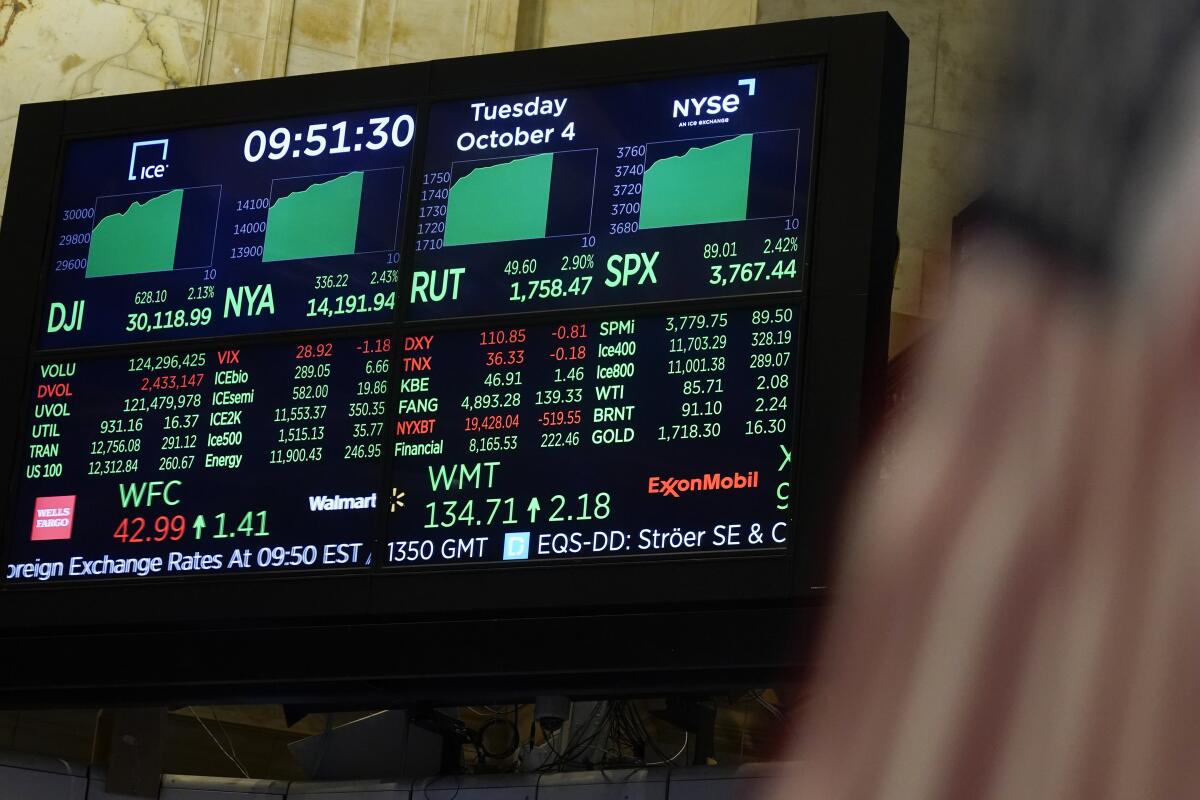Trimming the fat: Inflation finally hitting profit margins

- Share via
NEW YORK — Corporate profits have withstood raging inflation over much of the last year, but those good times may be ending.
Profits stayed fat even as companies’ costs rose thanks to one simple trick: Businesses boosted the prices they charged customers by more than their own costs rose.
Now, though, more companies are seeing their costs rise faster than their revenues. In the parlance of finance executives, their margins are getting squeezed, and that’s acting as a drag on their profits.
To be sure, corporate profits are still near record highs. Companies in the S&P 500 are in the midst of reporting overall growth of roughly 2% for the summer from a year earlier. Many companies also say they still have the power to hold the line on prices for their products, if not raise them further. But some signs of stress are beginning to show, and analysts say even faster margin declines may be on the way given how fragile the economy is.
Consider LyondellBasell, an international chemical company. Its chief financial officer recently said the company saw margins get squeezed last quarter “across all segments due to rising costs and weaker global demand.”
Coffee giant Starbucks, meanwhile, was one of the many companies that successfully pushed through price increases over the last year with no drop-off in customer loyalty or transactions because of them. But when executives earlier this month discussed their latest results, interim CEO Howard Schultz said, “We’re certainly not going to try and raise prices during this time.”
Elon Musk and his fellow billionaires are demanding absolute privacy, but given their power over the economy, they deserve an even brighter spotlight.
Profit margins for S&P 500 companies during the summer look like they dipped to 11.9%, according to FactSet. That essentially means they kept $119 of every $1,000 in sales as profit. That’s down from $122 three months earlier and from $129 a year earlier, but still above the average of $113 over the last five years.
One of the biggest reasons for the fall in margins is the recent rise in pay that workers have won recently. Total compensation for workers in the private industry rose 5.2% in the summer from a year earlier. Once workers get such increases, companies find it difficult to take them away.
“The combination of sticky wage costs and slowing end market/consumer pricing has been evident in recent macro data and loudly signals margin pressure,” strategists at Morgan Stanley wrote in a recent report.
They’re more pessimistic about trends for profit margins than most of Wall Street, forecasting a drop of 1.5 percentage points in 2023. That’s why they see a fall of 11% for profits at S&P 500 companies next year.
More to Read
Inside the business of entertainment
The Wide Shot brings you news, analysis and insights on everything from streaming wars to production — and what it all means for the future.
You may occasionally receive promotional content from the Los Angeles Times.











